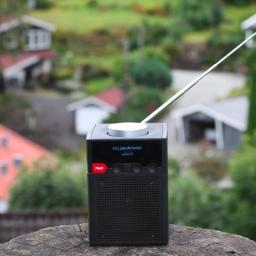Norway to shut down all analog FM radio
 Norway is making an historic move into a new radio era, being the first country in the world to decide upon an analog switch-off for all major radio channels. Several countries in Europe and Southeast Asia are in similar processes, choosing DAB-technology as the backbone of future radio distribution. Norway began the transition to DAB back in 1995. The DAB-coverage in Norway now exceeds FM-coverage. DAB provides Norway with 22 national channels, as opposed to five channels transmitting nationwide on FM.
Norway is making an historic move into a new radio era, being the first country in the world to decide upon an analog switch-off for all major radio channels. Several countries in Europe and Southeast Asia are in similar processes, choosing DAB-technology as the backbone of future radio distribution. Norway began the transition to DAB back in 1995. The DAB-coverage in Norway now exceeds FM-coverage. DAB provides Norway with 22 national channels, as opposed to five channels transmitting nationwide on FM."We can finally complete the work that has been on-going for many years. This is the best solution for all listeners throughout Norway, as they now have a better radio." 56 per cent of radio listeners use digital radio every day. 55 per cent of households have at least one DAB radio. While 44 % of listeners only use FM radio daily, according to Digitalradio survey by TNS Gallup. Switch-off starts in Nordland county 11th January 2017 and ends with the northernmost counties Troms and Finnmark 13th December 2017.
If everyone would have standardized on DRM for their SW & MW frequencies, China would be turning out dirt-cheap recievers for it, it would be cheap enough to be built-in to almost every radio sold, so most everyone would have one.
For FM replacements, there's no clear winner. DAB and DAB+ requires several (independent) broadcasters to all operate together from the same broadcast tower, making it a difficult conversion. It does potentially offer CD quality audio thanks to the lossy codec, but that makes it a poor choice for squeezing in lots of lower-quality sub-channels. DAB+ fixes this latter issue, but takes away the advantage of the former, and being completely incompatible destroys the installed-base. DMB has too much overhead and no particular benefits. The IBOC (in-band on-channel) standards are much better options, but HDRadio is expensive and proprietary for no good reason. So once again, I'd be happy to see DRM adapted to operate on those higher FM frequencies as well. But countries that chose DAB are planning on repurposing their FM bands, so not even the frequency range is close, world-wide, and proliferating incompatibilites even more.
The ability of a broadcaster to merge their FM, MW (AM), & SW offerings into a single, seamless data stream would be incredible. Driving away from the city, your radio would just seemlessly jump from the FM station to a longer-range AM station carrying the same content, at slightly lower quality, without a hiccup. When going back into a city, the switch to higher-quality FM channels would be seamless as well.
A nation-wide network of MW transmitters with the same content would be relatively easy to do, thanks to their huge footprint, taking the band from the least valuable, to the more valuable spectrum for broadcasters. And potentially having a SW station or two as a backup even further out, would mean you'd have satellite-radio like coverage at pretty good quality, without the fees.
BUT, since DRM hasnt caught-on yet, I'd rather see a new IBOC transmission standard which uses patent-free modulation and error correction, the better & patent-free Opus codec, and require radios to include SD card slots for dowloading data broadcasts, as well as optional video screens, so radio stations can occasionally send images to listeners, wheter just album cover-art, traffic maps, personality headshots, relevant news images. etc